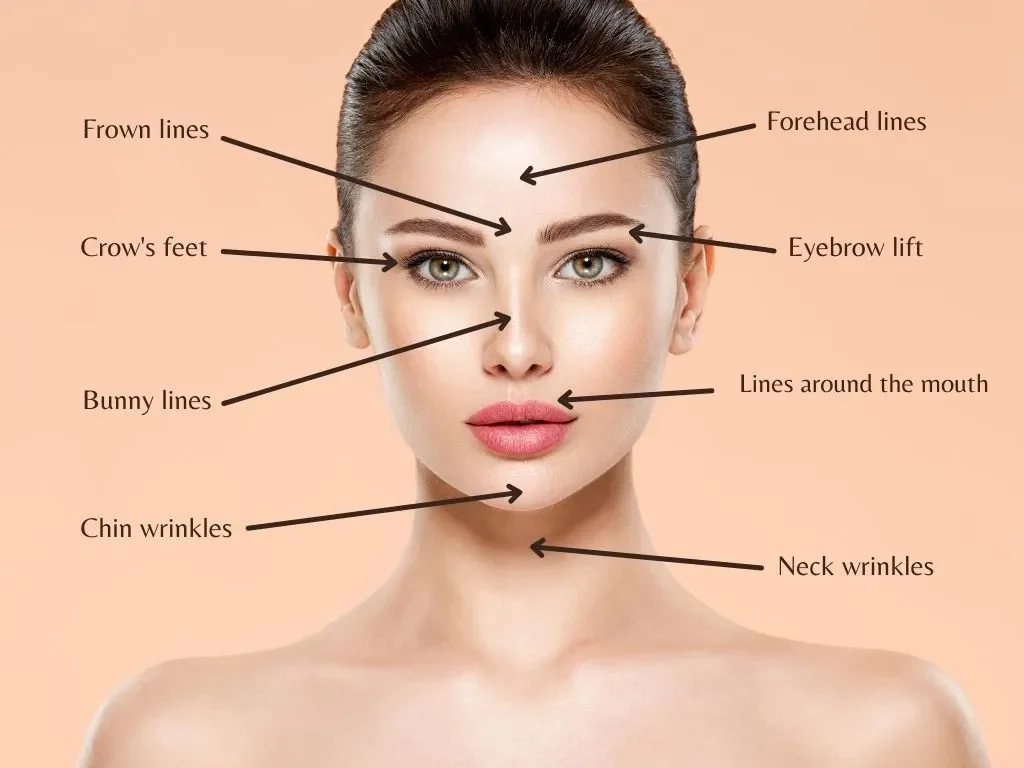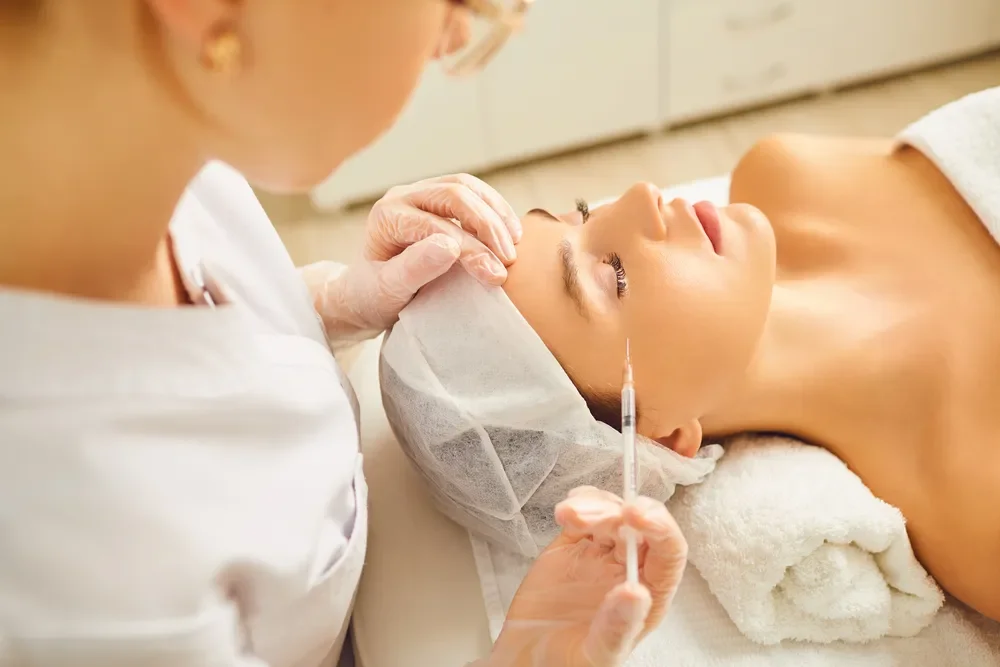Botox vs Fillers: What’s Best for You? A Complete Guide to Choosing the Right Cosmetic Injectable
By: Atlanta Mobile Medspa
Cosmetic injectables have revolutionized facial rejuvenation by offering personalized, minimally invasive solutions that deliver natural-looking results when performed by skilled, medically trained providers. Whether you’re weighing “botox or fillers” to soften expression lines, restore youthful volume, or plan a preventative “prejuvenation” strategy, this guide clarifies the key differences, treatment areas, longevity, cost, candidacy, benefits, risks, filler types, and planning considerations.
What Is the Difference Between Botox and Dermal Fillers?
According to the American Academy of Dermatology (AAD), Botox is a purified neurotoxin that relaxes targeted facial muscles to reduce dynamic wrinkles, while dermal fillers are gel-like materials injected beneath the skin to restore volume and smooth static creases.
This distinction underlies their complementary roles in facial rejuvenation and helps you decide which injectable—or combination—best addresses your concerns.
Quick Comparison: Botox vs Fillers
(Based on guidelines from the American Society of Plastic Surgeons (ASPS) and peer-reviewed dermatology journals)
How Does Botox Work to Treat Dynamic Wrinkles?
Botox works by blocking acetylcholine release at the neuromuscular junction, which relaxes overactive facial muscles and softens lines caused by expressive movements. The FDA has approved Botox for cosmetic use when administered by trained medical professionals.
Muscle Relaxation reduces forehead lines and crow’s feet
Onset of Action typically appears within 2–5 days
Natural Expression is preserved while crease formation is minimized
How Do Dermal Fillers Restore Volume and Smooth Static Wrinkles?
Dermal fillers add structural support under the skin, replacing lost hyaluronic acid or stimulating collagen to lift and contour static folds. The Mayo Clinic emphasizes that FDA-approved fillers such as Juvéderm and Restylane are safe when injected by qualified providers.
Volume Restoration for sunken cheeks and under-eye hollows
Hydration for plumpness and glow
Collagen Stimulation for long-term texture improvement
Key Treatment Areas for Botox and Fillers
The American Society for Dermatologic Surgery (ASDS) highlights the importance of targeting the right areas for natural balance.
Botox Zones: Forehead lines, glabellar “11s,” crow’s feet, bunny lines, neck bands
Filler Zones: Lips, cheeks, nasolabial folds, marionette lines, chin, jawline
Longevity and Maintenance
Botox: 3–4 months (ASDS guidance)
Hyaluronic Acid Fillers: 6–12 months
Radiesse (CaHA): 12–18 months
Sculptra (PLLA): Up to 2 years
PMMA & Fat Transfer: Long-lasting, permanent in some cases
Safety and Candidate Selection
The Cleveland Clinic stresses the importance of full medical history review before injectables. At Atlanta Mobile Medspa, every client undergoes a thorough consultation to confirm candidacy and set realistic expectations.
Good Candidates for Botox
Frown lines, crow’s feet, forehead creases
Those seeking preventive “prejuvenation”
Good Candidates for Fillers
Hollow cheeks, under-eye volume loss
Nasolabial folds, marionette lines
Lip contouring and jawline definition
Benefits and Risks
Benefits:
Botox: Smooths wrinkles, relieves migraines, reduces hyperhidrosis
Fillers: Restore volume, contour facial features, stimulate collagen
Risks: (rare but possible)
Bruising, swelling (usually mild)
Asymmetry or lumps (can be corrected)
Vascular occlusion or infection (very rare, minimized by board-certified injectors)
Safety Tip: Always choose a board-certified dermatologist, plastic surgeon, or licensed injector who uses FDA-approved products.
Planning Your Rejuvenation
The American Society of Plastic Surgeons (ASPS) recommends combination therapy for balanced outcomes. Botox relaxes muscles first, followed by fillers to restore lost structure, creating harmony without overcorrection.
Prejuvenation
Early, low-dose Botox and light fillers help younger patients prevent deeper wrinkles and maintain facial structure long-term.
What to Expect During Treatment
Procedure Time: 15–60 minutes
Downtime: Minimal—most resume activities same day
Aftercare: Avoid strenuous activity, facial massages, and heat for 24 hours
Cost Considerations
The cost of Botox and dermal fillers can vary significantly based on the product used, the area treated, the amount of product needed, and the provider's expertise. It's essential to discuss pricing during your consultation.
Botox: Typically priced per unit. A common treatment area like the forehead might require 10-20 units.
Dermal Fillers: Usually priced per syringe. The number of syringes needed depends on the treatment area and desired outcome (e.g., lips may require one syringe, while cheek augmentation might need two or more).
Factors Influencing Cost:
Product Type: Different brands and formulations have varying price points.
Provider's Experience: Highly experienced and sought-after injectors may charge more.
Geographic Location: Costs can differ based on the cost of living in a particular area.
Treatment Complexity: More complex or extensive treatments will naturally cost more.
Note: While cost is a factor, prioritizing safety and natural-looking results by choosing a qualified provider is paramount.
Understanding Different Filler Types
Beyond hyaluronic acid, several other types of fillers are available, each with unique properties and benefits:
Calcium Hydroxylapatite (CaHA) Fillers (e.g., Radiesse): These fillers not only provide immediate volume but also stimulate the body's natural collagen production over time, offering longer-lasting results and improved skin texture. They are often used for deeper wrinkles and contouring.
Poly-L-Lactic Acid (PLLA) Fillers (e.g., Sculptra): PLLA is a biocompatible synthetic substance that works by gradually stimulating collagen production. It's a "collagen stimulator" rather than a direct filler, providing a more gradual and natural-looking restoration of volume over several treatment sessions. Ideal for larger areas of volume loss.
Polymethylmethacrylate (PMMA) Fillers: These are semi-permanent fillers containing tiny, smooth PMMA beads suspended in a collagen gel. Once injected, the gel is absorbed, leaving the beads to support the skin. They are often used for permanent wrinkle correction and facial contouring.
Autologous Fat Transfer: This involves harvesting fat from another part of the patient's body (e.g., abdomen or thighs) and injecting it into the face. It offers a natural and long-lasting solution for volume restoration but requires a surgical procedure and can have variable absorption rates.
Conclusion
Choosing between Botox and dermal fillers empowers you to achieve your desired aesthetic goals with precision and safety. Both are FDA-approved, medically proven, and effective when performed by an experienced provider. At Atlanta Mobile Medspa, our licensed team follows strict medical standards to ensure results that are not only beautiful—but safe.
Take the first step toward facial rejuvenation today with a consultation that puts your goals, health, and safety first.
Expert Endorsements
U.S. Food and Drug Administration (FDA) Botox and dermal fillers are FDA-approved for cosmetic use when administered by trained medical professionals.
American Academy of Dermatology (AAD) Board-certified dermatologists follow strict safety protocols for all injectable treatments, including Botox and dermal fillers.
American Society for Dermatologic Surgery (ASDS) Proper consultation and assessment of medical history are essential before any facial injectable procedure.
American Society of Plastic Surgeons (ASPS) Botulinum toxin and soft tissue fillers are safe, minimally invasive procedures with a low risk of complications when performed correctly.
Journal of Cosmetic Dermatology Studies confirm the safety and effectiveness of Botox and dermal fillers for facial rejuvenation when correct dosing and techniques are used.
Mayo Clinic Patients should always seek qualified injectors who use FDA-approved products to minimize side effects and achieve natural results.
Cleveland Clinic The Cleveland Clinic recommends discussing medical history, allergies, and treatment goals with your provider before any injection.
Ready to Explore Your Options?
Consult with our expert injectors to create a personalized treatment plan that meets your unique aesthetic goals.




